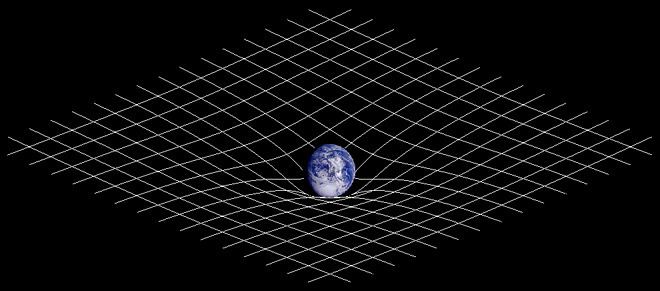 | ||
In theoretical physics, the Brans–Dicke theory of gravitation (sometimes called the Jordan–Brans–Dicke theory) is a theoretical framework to explain gravitation. It is a competitor of Einstein's theory of general relativity. It is an example of a scalar-tensor theory, a gravitational theory in which the gravitational interaction is mediated by a scalar field as well as the tensor field of general relativity. The gravitational constant G is not presumed to be constant but instead 1/G is replaced by a scalar field
Contents
The theory was developed in 1961 by Robert H. Dicke and Carl H. Brans building upon, among others, the earlier 1959 work of Pascual Jordan. At present, both Brans–Dicke theory and general relativity are generally held to be in agreement with observation. Brans–Dicke theory represents a minority viewpoint in physics.
Comparison with general relativity
Both Brans–Dicke theory and general relativity are examples of a class of relativistic classical field theories of gravitation, called metric theories. In these theories, spacetime is equipped with a metric tensor,
All metric theories satisfy the Einstein equivalence principle, which in modern geometric language states that in a very small region (too small to exhibit measurable curvature effects), all the laws of physics known in special relativity are valid in local Lorentz frames. This implies in turn that metric theories all exhibit the gravitational redshift effect.
As in general relativity, the source of the gravitational field is considered to be the stress–energy tensor or matter tensor. However, the way in which the immediate presence of mass-energy in some region affects the gravitational field in that region differs from general relativity. So does the way in which spacetime curvature affects the motion of matter. In the Brans–Dicke theory, in addition to the metric, which is a rank two tensor field, there is a scalar field,
The field equations of Brans–Dicke theory contain a parameter,
Brans–Dicke theory is "less stringent" than general relativity in another sense: it admits more solutions. In particular, exact vacuum solutions to the Einstein field equation of general relativity, augmented by the trivial scalar field
Like general relativity, Brans–Dicke theory predicts light deflection and the precession of perihelia of planets orbiting the Sun. However, the precise formulas which govern these effects, according to Brans–Dicke theory, depend upon the value of the coupling constant
It is also often taught that general relativity is obtained from the Brans–Dicke theory in the limit
The field equations
The field equations of the Brans/Dicke theory are
where
The first equation says that the trace of the stress–energy tensor acts as the source for the scalar field
The second equation describes how the stress–energy tensor and scalar field
For comparison, the field equation of general relativity is simply
This means that in general relativity, the Einstein curvature at some event is entirely determined by the stress–energy tensor at that event; the other piece, the Weyl curvature, is the part of the gravitational field which can propagate as a gravitational wave across a vacuum region. But in the Brans–Dicke theory, the Einstein tensor is determined partly by the immediate presence of mass-energy and momentum, and partly by the long-range scalar field
The vacuum field equations of both theories are obtained when the stress–energy tensor vanishes. This models situations in which no non-gravitational fields are present.
The action principle
The following Lagrangian contains the complete description of the Brans/Dicke theory:
where
The matter term includes the contribution of ordinary matter (e.g. gaseous matter) and also electromagnetic fields. In a vacuum region, the matter term vanishes identically; the remaining term is the gravitational term. To obtain the vacuum field equations, we must vary the gravitational term in the Lagrangian with respect to the metric
Note that, unlike for the General Relativity field equations, the
To prove this result, use
By evaluating the
For comparison, the Lagrangian defining general relativity is
Varying the gravitational term with respect to
In both theories, the full field equations can be obtained by variations of the full Lagrangian.
